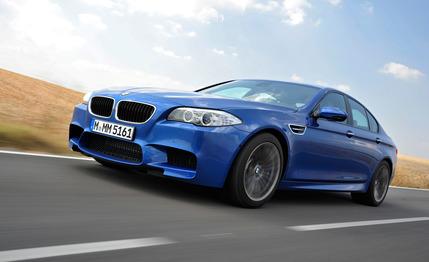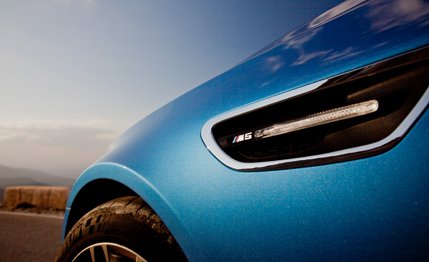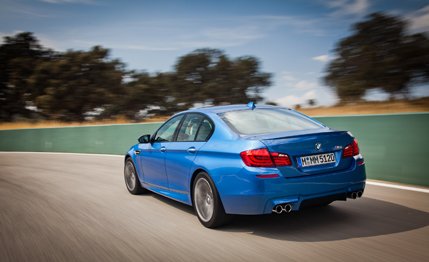
 Instrumented Test
Instrumented Test


Building factory hot rods must be a good business.
Practically every automaker has an R or a GT or a V or an S or a Spec-Something-or-Other sexing up its catalog. But nobody commits to the job with the fervor of BMW’s M division GmbH. Granted, the gulf between track and street that opened up years ago means that BMW’s speed shop no longer puts motorsport specials on the road with detuned race engines. But that doesn’t mean new M’s are nothing more than Big Macs with barbecue sauce.
Okay, maybe the 1-series M sort of is.
But take the example of the new 560-hp “M TwinPower Turbo” M5—Bimmer-nerd code: F10—that goes on sale in the U.S. late next summer as a 2013 model.


In the F10 M5, you get: a unique engine [see sidebar]; a unique, reinforced and re-ratio’d, seven-speed dual-clutch transmission; and a unique, electronic limited-slip differential with a unique aluminum horse-collar mount for added rigidity. There’s a unique suspension with forged aluminum components and nary a part number shared with any other BMW; a unique variable-ratio steering gear with hydraulic instead of electric boost as in other 5s; unique, iron-and-aluminum brake rotors clamped by unique radial-mount, monoblock front calipers housing six asymmetrically sized pistons per wheel; and a unique front crossmember, stiffened and attached by two additional bolts because somebody thought that was important. A unique rear-suspension cradle is rigidly mounted to the unibody to eliminate the weight and flex of rubber bushings, unique stiffening rods and shear plates underneath serve as extra bracing, and the car runs enough special software to land it on an asteroid.
You may scoff upon learning the M5’s price, expected to fall near $92,000. To that prodigious sum we say: How can BMW possibly sell a couple thousand copies per year so cheaply? What does the dedicated tooling cost, anyway? How much is it to change 10 things about an engine, including the induction system and compression ratio, and then recertify it? It’s a lot of Big Macs. Maybe not as many Big Macs as creating a bespoke V-10, as in the previous E60, but a lot.
The new M5 will assuredly be profitable. But whether it is spectacular or merely great—many people would put a 4300-pound luxury sedan that hits 60 mph in 3.7 seconds firmly in the former category—it’s definitely no parts-bin badge job.


Speaking of acceleration numbers, we have them, stolen on a quiet side road in southern Spain while nobody was looking except some ducks and possibly a Chinese spy satellite. It took a while to master the new M5’s picayune order of button pushing and lever pulling to activate the launch control (example: Step on the brake but not too hard, hold the shift lever forward but not for too long).
Launch control automatically dumps the clutch at about 3000 rpm and upshifts for you. When we finally did it right, the quarter-mile went down in 12 seconds flat at 122 mph. In another 6.3 seconds, the car was passing 150 mph. It pulls nearly 1.0 g braking from 70 to 0 in 165 feet. A skidpad figure will have to wait until we can get a car to test in the U.S.
Compared with an E60 M5 equipped with an automated manual transmission, the F10 is a half-second quicker both to 60 mph and through the quarter-mile, and 2.4 seconds quicker to 150 mph. The braking distance is seven feet longer, but then, the F10 is about 200 pounds heavier. Will the larding up of our favorite vehicles ever stop?